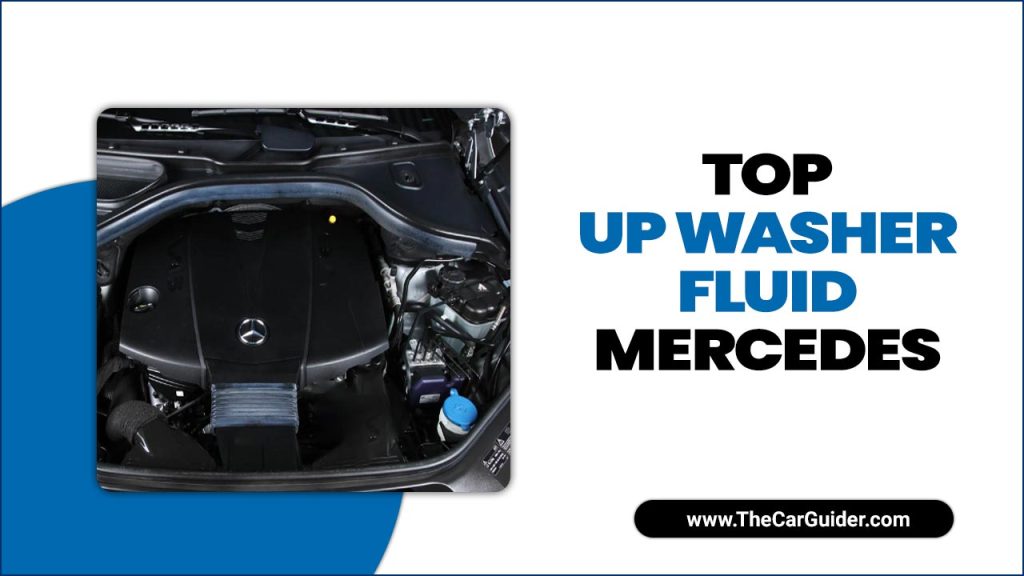Keeping your Mercedes in top condition requires regular maintenance and attention to detail. One often overlooked aspect of car care is the washer fluid.
While it may seem like a small and insignificant part of your vehicle, washer fluid ensures clear visibility while driving. Not only does it help remove dirt and grime from your windshield, but it also aids in de-icing during cold weather.
As a proud Mercedes owner, it is important to properly top up your washer fluid to keep your car running smoothly and looking its best. We will discuss why washer fluid is important and why Mercedes vehicles require specific fluids.
We will also guide you through the step-by-step process of top-up washer fluid Mercedes. So, let’s start by ensuring your vehicle stays clean and safe on the road.
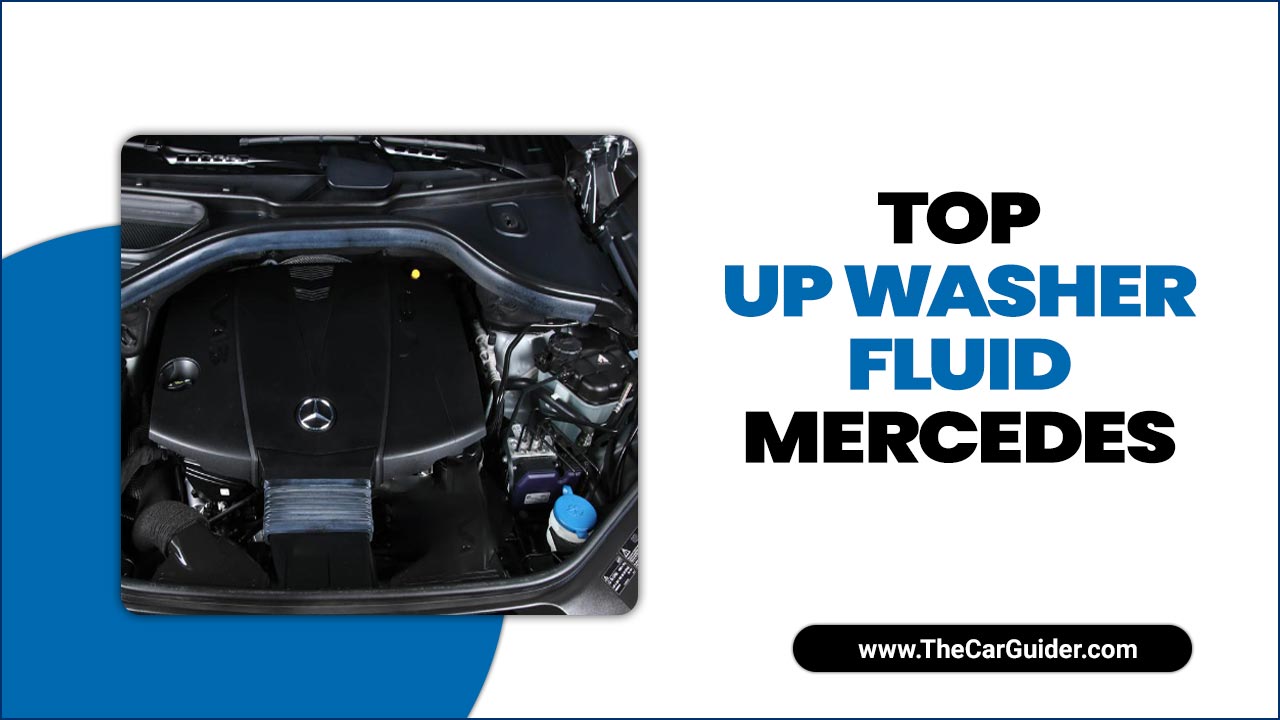
The Importance Of Washer Fluid Top-Up
Washer fluid plays a crucial role in maintaining the visibility and safety of your Mercedes vehicle. It is important to regularly top up the washer fluid to ensure clear vision while driving. Washer fluid helps to remove dust, dirt, and grime from your windshield, improving visibility and preventing smearing or streaking.
In addition, washer fluid also contains antifreeze properties, which are especially important during colder months to prevent freezing on the windshield. Neglecting to keep the washer fluid at an appropriate level can compromise your safety on the road.
Necessary Tools And Materials
When it comes to topping up the washer fluid in your Mercedes, there are a few necessary tools and materials that you will need. Here is a list of what you will need:
- Washer fluid
- Funnel
- Distilled water
- Clean cloth or paper towels
Top Up Washer Fluid Mercedes With These Effective Steps
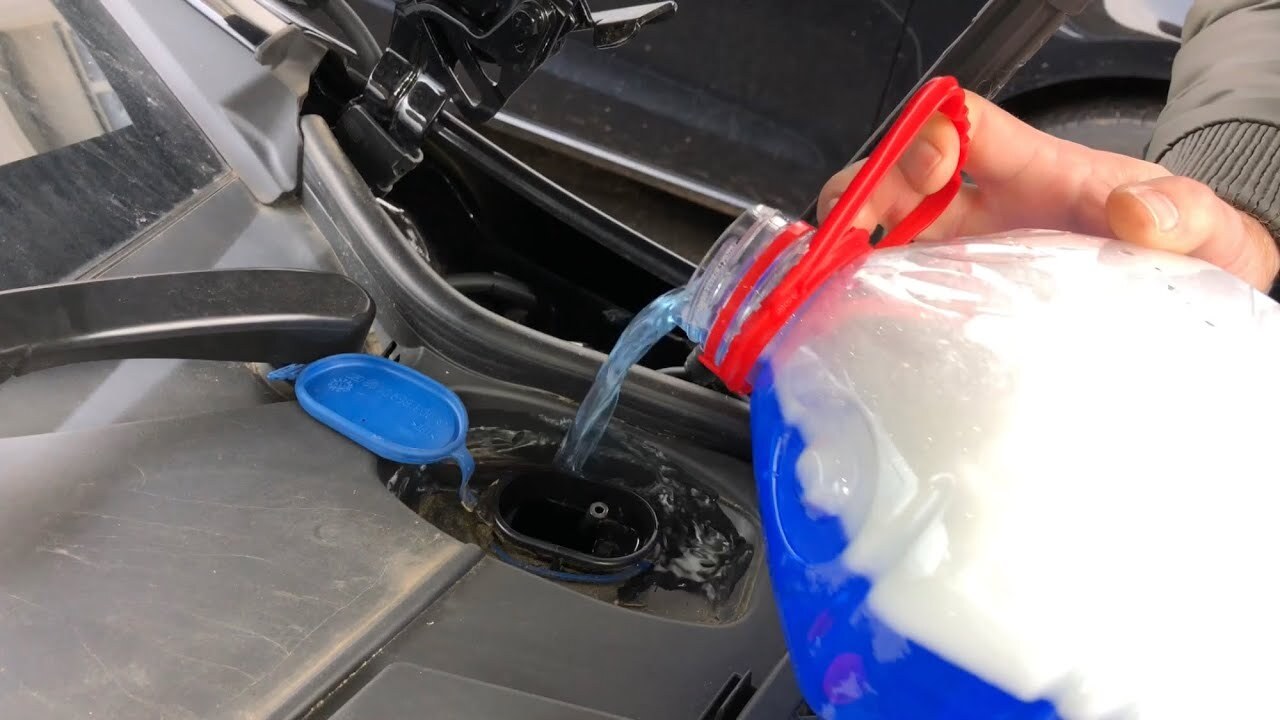
When topping up washer fluid in a Mercedes, follow these steps:
- Locate the washer fluid reservoir under the hood.
- Remove the cap of the reservoir and set it aside.
- Pour washer fluid into the reservoir until it reaches the fill line.
- Securely tighten the cap back onto the reservoir.
- Close the hood of your Mercedes.
Regularly checking and topping up washer fluid ensures clear visibility while driving and helps maintain your Mercedes in top condition.
What Are The Common Problems With Washer Fluid In A Mercedes?
Common problems with washer fluid in Mercedes vehicles may include:
- Freezing: In cold climates, washer fluid can freeze if not properly formulated or if the vehicle is exposed to extremely low temperatures for an extended period.
- Contamination: Contaminants such as dirt, debris, or even algae can build up in the washer fluid reservoir or lines over time, leading to clogs or issues with the washer fluid pump.
- Leaks: Washer fluid leaks can occur due to damaged reservoirs, cracked hoses, or faulty seals.
- Washer fluid pump failure: The washer fluid pump, responsible for pumping the fluid from the reservoir to the windshield, can fail over time due to wear and tear or electrical issues.
- Washer fluid sensor malfunction: Some Mercedes vehicles are equipped with washer fluid level sensors that monitor the fluid level in the reservoir.
- Washer fluid reservoir contamination: Over time, the reservoir can accumulate sediment, debris, or microbial growth, leading to contamination of the washer fluid.
What Happens If You Put Windshield Wiper Fluid Into Coolant?
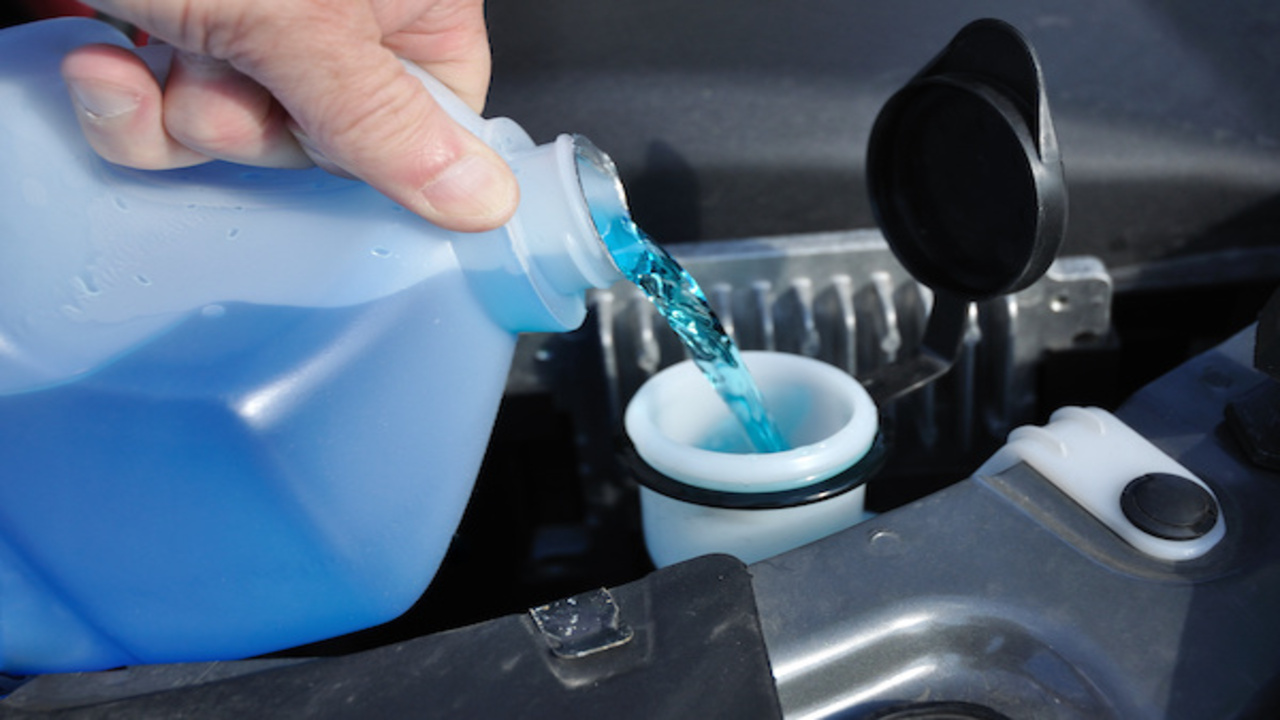
Mixing windshield wiper fluid with coolant can seriously affect your vehicle’s engine and cooling system. Windshield wiper fluid is designed for cleaning glass surfaces and contains chemicals and additives not meant to be ingested by the engine. If the wiper fluid is mistakenly added to the coolant reservoir.
It can contaminate the cooling system, leading to potential damage and malfunctions. The chemicals in the wiper fluid can react with the cooling system’s components, causing corrosion, clogs, and leaks. This can result in overheating, reduced engine performance, and costly repairs.
It is crucial to only use the appropriate fluids for each system in your vehicle to prevent such issues and ensure the smooth operation of your car. If the wrong fluid has been added, it is recommended to flush the system and refill it with the correct coolant to avoid further damage.
Always double-check the labels and verify that you use the right products for each part of your vehicle to maintain its optimal functioning and longevity.
How Do You Troubleshoot A Broken Windshield Washer Pump?
To troubleshoot a broken windshield washer pump, follow these steps:
- Check the washer fluid level: Ensure enough fluid is in the reservoir.
- Inspect for clogs: Look for any hose blockages or nozzles that could prevent the fluid from spraying.
- Test the pump motor: Listen for any humming noise when you activate the washer. If there’s no noise, the motor may be faulty.
- Check fuses: Verify if the fuse related to the washer pump is intact and replace if necessary.
- Consult a professional: If none of these steps resolves the issue, it may be best to seek help from a mechanic or technician specialized in auto glass repairs.
How Do You Prevent Washer Fluid From Freezing In A Mercedes?
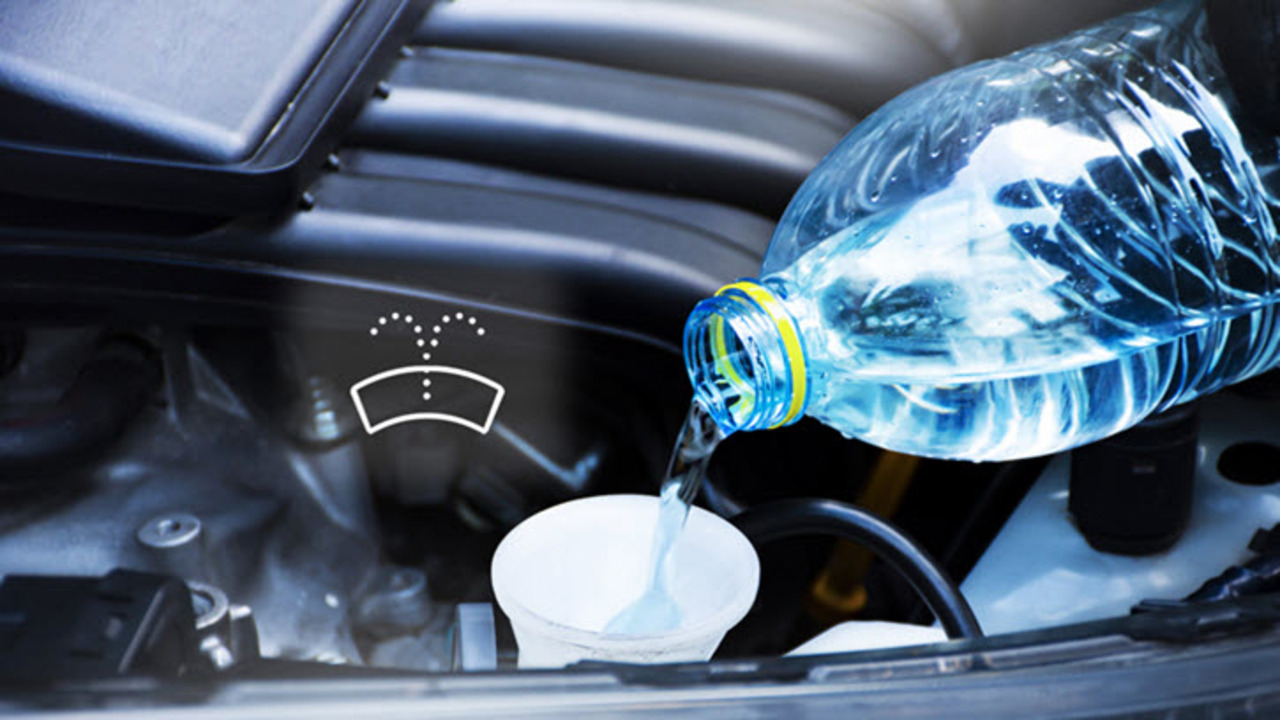
To prevent washer fluid from freezing in a Mercedes, follow these basic repair procedures:
- Check the engine compartment’s window washer fluid reservoir for leaks or damages.
- Ensure broad expertise is used when handling any repairs or replacements to avoid further issues.
- Use washer jets to spray the fluid onto the windshield and keep it clean.
- Avoid using plain water in colder temperatures, as it can freeze and damage the system.
- Consider using specialized winter washer fluid that has antifreeze properties to prevent freezing.
Conclusion
Maintaining your Mercedes’s proper washer fluid level is essential for clear visibility and safe driving. Regularly checking and topping up your washer fluid ensures that you have enough supply to clean your windshield effectively. Follow the simple step-by-step guide mentioned above to easily top up your washer fluid in your Mercedes.
By taking care of this small but important maintenance task, you can ensure that your windshield remains clean and clear, providing optimal visibility on the road. Drive safely and confidently, knowing that you have taken care of this crucial aspect of vehicle maintenance.
Frequently Asked Questions
1.Can You Use Water Instead Of Windshield Wiper Fluid?
No, using water instead of windshield wiper fluid is not recommended as water lacks the cleaning agents and antifreeze properties in wiper fluid, which can result in poor visibility and potential damage to the windshield wiper system.
Using water may freeze in cold temperatures, leading to further complications. It is advisable to use windshield wiper fluid for optimal performance and safety.
2.What Can Be Done To Fix The Low Water Alert In The Washer Water Tank?
If your washer displays a low water alert, check the water supply valves to ensure they are fully open and have adequate water pressure. Additionally, clean the inlet filters and hoses for any blockages restricting water flow.
If the issue persists, a malfunctioning water level sensor or control board may need to be replaced by a professional technician. Regular maintenance and troubleshooting of these components can help prevent and resolve low water alert issues in the washer tank.
3.Why Does Your Car Run Out Of Windshield Wiper Fluid So Quickly?
Due to various factors, your car may run out of windshield wiper fluid quickly. One reason could be a leakage in the filler neck, causing fluid to drain rapidly. Additionally, road grime buildup may also contribute to faster depletion.
Drivers, especially those with older vehicles or those driving frequently, should regularly check for leaks and clean their windshields to maintain visibility while on the road. It is advisable to consult with professionals like Daimler AG for any maintenance or repair issues related to your vehicle’s fluid system.
4.How Do You Fix A Windshield Washer Fluid Hose?
To fix a windshield washer fluid hose, consult the owner’s manual for guidance. Locate the hose and inspect it for any visible damage or blockages. Refill the reservoir with clean water if the warning light indicates a low fluid level. Use appropriate tools to detach and reattach the hose securely, ensuring a proper fit to prevent leaks.
5.How Do You Refill The Windshield Washer Reservoir?
Refilling the windshield washer reservoir is a simple process. First, ensure that your wiper blades are in good condition, as they are essential for effective cleaning. Next, locate the reservoir, usually found near the engine.
Remove the cap and pour the washer fluid until full. Check your wiper blades and refill the reservoir regularly to maintain visibility while driving. It’s a nice thing to do for your car and ensures clear vision on the road.
6.How Often Should You Refill Your Windscreen Washer Fluid?
You should refill your windscreen washer fluid whenever it runs low or is not enough to effectively clean the windscreen.
It is recommended to check the fluid level regularly and top it up as needed, especially before a long journey or during seasons when the roads are particularly dirty. This will ensure that you have clear visibility while driving and can avoid any potential safety hazards caused by a dirty windscreen.


